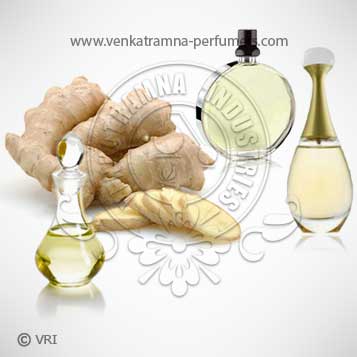
| Botanical Name | Curcuma zedoaria |
| Common Name | Curcuma zedoaria, Curcuma zedoaria Roscoe. |
| Country of Origin | India |
| Solubility | Soluble in 80% - 90% alcohol |
| Specific Gravity | 0.899 - 0.9313 @ 27º C |
| Optical Rotation | [-] 0.75º - 8º @ 27º C |
| Refrective Index | 1.39 - 1.482 @ 27º C |
| PlantPart | Not Applicable |
| Bland With | Bay, cedarwood, ionones, pine needle and tonka. |
| CAS No | Not Applicable |
| Flash Point | 89°C |
| Extraction Method | Not Applicable |
We offer Zedoaria Essential Oil which is one of the most widely used ingredients in the perfumery and flavor industry. This oil has, since long, been a part of the folk medicine. Curcuma zedoaria, a medicinal tuber plant belonging to this family, is a close relative of Curcuma longa from which the curcumin is isolated. Various parts of Curcuma zedoaria are used in Ayurveda and other folk and tribal system of medicines. Curcuma zedoaria is a constituent of a wide variety of ayurvedic preparations like Dasamularishtam, Valiya Rasnadi Kashayam, and so forth. The rhizome is used for curing stomach diseases, toothache, blood stagnation, leucoderma, tuberculosis, enlargement of spleen, and for promoting menstruation in traditional medicine in Asia. Anti-inflammatory activity, antifungal activity, antiulcer activity, antimicrobial effect, hepatoprotective activity, antiamoebic effect, of this plant rhizome have been reported. The Curcuma zedoaria rhizome is termed Ezhu in Chinese and is extensively used in traditional Chinese medicine to treat various ovarian and cervical cancers. Curdione isolated from this plant has been found to inhibit prostaglandin E2 production and cyclooxygenase-2 expression, both of which are implicated in inflammation and carcinogenic process.
Curcuma zedoaria belonging to the family Zingiberaceae has been used in the traditional system of medicine in India and Southwest Asia in treating many human ailments and is found to possess many biological activities. The rationale of the present study was to isolate, identify, and characterize antitumour principles from the rhizomes of Curcuma zedoaria, to assess its cytotoxic effects on human and murine cancer cells, to determine its apoptosis inducing capacity in cancer cells, and to evaluate its tumour reducing properties in in vivo mice models. Isocurcumenol was characterized as the active compound by spectroscopy and was found to inhibit the proliferation of cancer cells without inducing significant toxicity to the normal cells. Fluorescent staining exhibited the morphological features of apoptosis in the compound-treated cancer cells. In vivo tumour reduction studies revealed that a dose of 35.7?mg/kg body weight significantly reduced the ascitic tumour in DLA-challenged mice and increased the lifespan with respect to untreated control mic
Color : Golden yellow viscous liquid having a warm-spicy, woody & camphoraceous cineolic odor,
Aroma : Not Applicable
Mainly mono and sesquiterpenoids, zederone, curzerenone, germacrone, furanodienone, germacrone-4,5-epoxide, monoterpene hydrocarbons (2.3%), oxygenated monoterpenes (26%), sesquiterpene hydrocarbons (38%), oxygenated sesquiterpenes (13.5%), á-Terpinyl acetate (8.4%), isoborneol (7%), curmanolide A and curmanolide B, curcumenone, isocurcumenol, curcumenol, dehydrocurdione (9%) and selina-4(15),7(11)-dien-8-one (9.4%).
Zedoaria Essential Oil is widely used in the perfumery and flavor industry because of its rich aroma. C. zedoaria is a well-known ethnomedicinal plant that is also used in Ayurveda. Its use in the Indian traditional folk medicine is also well documented. Below are different parts of C. zedoaria which have different applications in traditional systems of medicine.